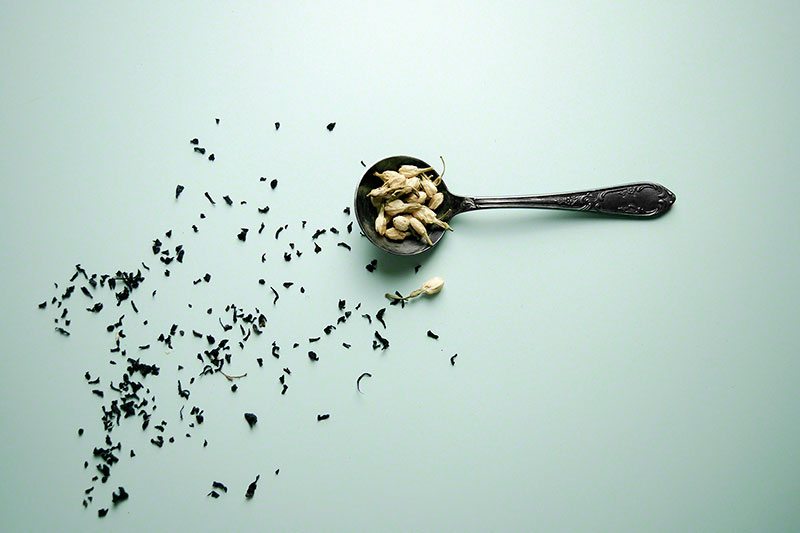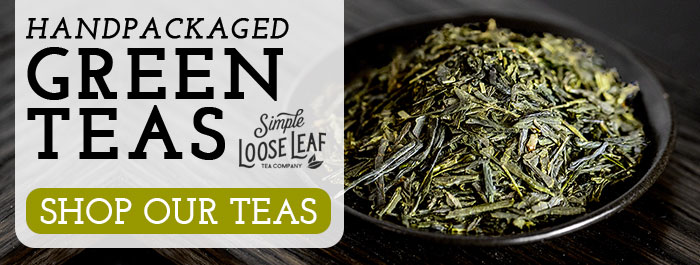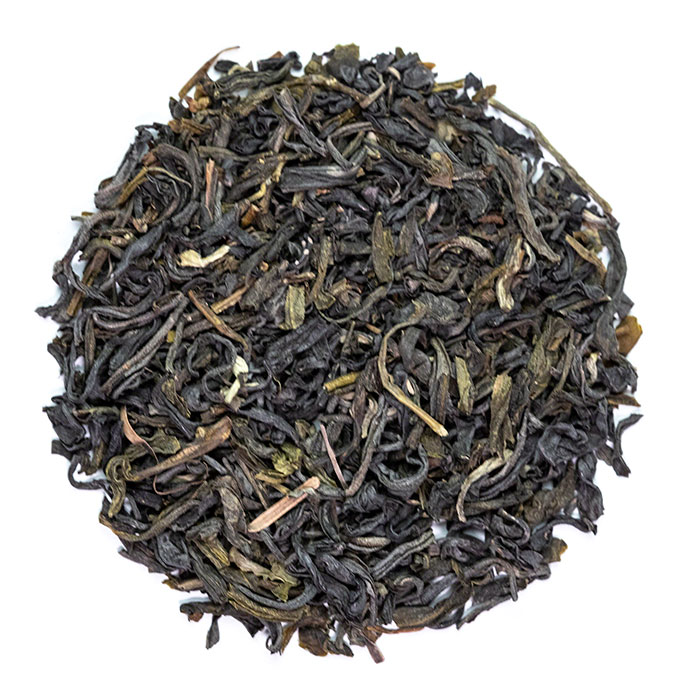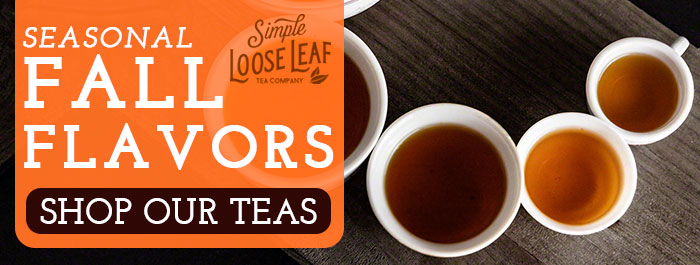Does Jasmine Tea have Caffeine? What is Jasmine Tea & More
Drinking jasmine tea has been associated with many benefits. Rarely any tea can match the sophistication and elegance of a cup of jasmine tea. This queen of scented leaves is a category on its own. Jasmine is not only the most commonly used flowers in the perfume industry, it’s an all-time favorite in the scented tea world too. It can be blended with delicate white tea, fresh green tea leaves, strong and bold black tea, or oolong teas. Learn more about caffeine content of different types, and how to prepare best tasting cups of jasmine tea.
Does jasmine tea have caffeine?
Pure jasmine tea contains no caffeine at all. However, jasmine is more often blended with other teas. It’s added to different blends to enhance the flavor, add benefits and make tea truly irresistible.
Therefore, the name jasmine tea usually implies scented, blended or flavored green tea. Since all real camellia sinensis teas contain caffeine, jasmine tea will have caffeine too. In fact, it will have a similar amount of caffeine as pure teas. Expect from 20 to 60 mg of caffeine per cup, depending on the tea type and how many tea leaves you use.
Caffeine in tea depend on many factors, from tea varietal to growing conditions and processing methods. How you brew your tea leaves will also have an impact on the final caffeine content. One minute steep will easily result in 50% less caffeine content than a 3 minute steep. Expect more caffeine in teas that contain more tips and younger leaves, such as Downy Jasmine Needle tea.
One of the most unique jasmine teas, Purple jasmine, is a mix of rare purple tea and jasmine green tea. Purple tea contains less caffeine than green tea, but higher levels of antioxidants.
Different jasmine tea blends will have less caffeine than pure jasmine. Herbal tea is rarely used as a base for jasmine tea, but when it is, the tea blend won’t contain any caffeine.
What is Chinese jasmine tea?
Chinese jasmine tea is a scented tea, usually green or white. There are different ways of making jasmine tea. The authentic way of making jasmine tea is mixing the tea leaves with fresh flowers until they soak up the fragrance and removing them later. This step is repeated several times and requires a lot of jasmine blossoms. Some types may even require up to a few kilos of blossoms per kilo of tea. Other way is simply blending the leaves with dry flowers, which will give much less fragrance and flavor, but also lower the cost of tea. The cheapest way is flavoring the tea leaves with artificial flavors. Although this tea can be very delicious too, you won’t be able to enjoy the full benefits, flavor and scent as with the traditional high quality jasmine tea.
Sichuan, Hunan and Fujian province are all famous for producing high quality jasmine teas.
Traditional Jasmine Tea
Traditional jasmine tea is green tea scented with jasmine blossoms and may contain some dried flowers too. Leaves are scented with fresh flowers for a number of times to give a strong and recognizable scent and taste. This tea contains no artificial flavors and is made with natural flowers only.
Jasmine Dragon Pearls
The prettiest of all jasmine teas is Jasmine Dragon Pearls. Leaves are scented with blossoms and rolled into small tight balls. It’s made with younger buds and leaves that covered with delicate white hair so it’s often confused with white tea. Although, white and black types can be made too.
Jasmine Silver Needle
Jasmine Silver Needle is made with Silver Needle white tea. Higher quality teas are made with plumper buds with more white hair, and may only contain traces of jasmine flowers. They are scented, rather than blended. Other types may have smaller, less hairy buds and lots of flowers and are more likely to be blended, rather than scented.
Jasmine tea from other countries
Although the most popular jasmine teas come from China, other countries are producing jasmine tea too. Jasmine is a national flower of a few countries and respected and adored in many countries world-wide. Japan produces jasmine tea too, but it’s usually made with Chinese green tea as a base. Sencha can be used too, although quaite rare compared to other types of tea. The flavor profile of sencha is more suitable for drinking pure or blending with other fresher and less fragrant ingredients. Stronger Chinese green teas with light astringency and smoky notes create a much better balance with sweet and fragrant jasmine blossoms. Vietnamese, Thai and Indian tea share more in common with Chinese than Japanese teas, so they are a great base for scenting too.
Is jasmine tea green tea?
Jasmine tea is not necessarily a green tea, although most of them are. Ball shaped green oolongs are a good choice for scenting with jasmine flowers too. Nowadays, black jasmine tea is also common. Stronger and bolder flavor of black tea is a a great base for these fragrant and sweet blossoms.
Herbal jasmine teas are usually made with blending only, never with scenting, with the most common tea base being rooibos.
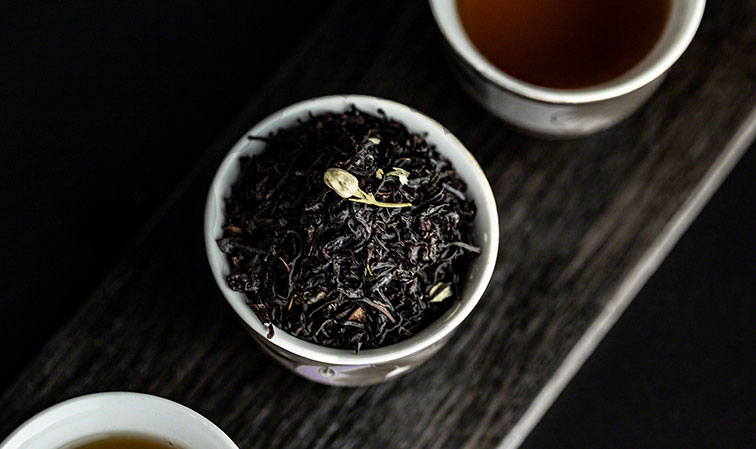
Simple Vanilla Black with jasmine blossoms
How to brew jasmine tea
A cup of jasmine tea may provide more than just a delicious drinking experience. It contains antioxidants, may have a sedative effect and work as an antidepressant, may help protect from heart disease, and even aid weight loss. Use about 2-3 grams of tea leaves per cup. Bring water to a boil and let it cool down to 176-185 °F for green tea. Steep for 1-3 minutes. You can steep Jasmine Dragon Pearls for more than 3 times and with a slightly hotter water. Use the same leaves until they unfurl. You can re-steep all jasmine teas. For making jasmine black tea, use the same amount of leaves, but steep with almost boiling water.
Read more about the health benefits of jasmine tea here.
Disclaimer: The purpose of this article is not to diagnose or treat any diseases, or to replace an opinion of a professional doctor. Never self-treat any diseases, or drink large quantities of tea, real or herbal, if you are suffering from serious diseases, are pregnant or breastfeeding. As every person is different, it’s impossible to make a general statement about the benefits or side-effects.



